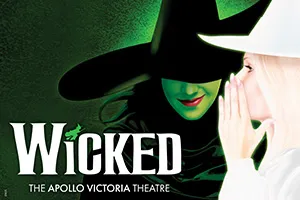The play may be set in hell, but it exists in a theatrical no-man’s land.
Following their unrelated deaths, three people are placed together in the same room. They arrive one at a time; Joseph Garcin is the first. Expecting to see implements of torture, fire and maybe the Devil himself, he is somewhat mystified by the furniture and the haunting valet who escorted him there. Next to arrive is Inès Serrano, a manipulative lesbian who continues her scheming even in death. Unlike the others, she is prepared to be honest and acknowledge her wrongdoings. They are ultimately joined by Estelle Rigault, a posh, money-grabbing, murderous adulteress who continues her seduction in Hades. Joseph wriggles his way around various lies and incidents before finally caving in to the pressure of telling the truth.
Charlie Rogers, the valet, has little to do in the play but in his brief appearance gives a creepy, menacing portrayal of a character from the underworld. Tom Younger is a rather lack-lustre Joseph who is occasionally provoked into some passion, but whose crime of cowardice is quite credible. Coco Brown (Inès) would be more convincing if she l mumbled learned to project properly. Even in such an intimate place, her words are often lost. Conversely, Hetty Hodgson’s languid pomposity can be seen and heard, but her Estelle was no more convincing for that. The convincing element of this hell was how ill at ease they seemed with each other.
The attempt to update this play appears to rest largely around three IKEA stools. The cast seem to have as much difficulty moving around these as shoppers in the store on a crowded weekend Admittedly, the space is small, but with only three people on stage there seems to be no need for the ugly groupings, clumsy confrontations, congested corners and collisions that so often occurred. The old, black and white television set came from an earlier era and so is inconsistent with the stools. It took up more space and could have been disposed of altogether. Their looking at the non-existent footage of what was happening on earth following their deaths could just as easily have been imagined by gazing over the heads of the audience.
This production is a missed opportunity to create something new from an old script. With all its weaknesses the overriding failure is establish a uniform style. The naturalism of the acting and the costumes are at odds with almost everything else and the adaptation, combined with the performances, fails to register in the realms of absurdism or black comedy. The play may be set in hell, but it exists in a theatrical no-man’s land.


















